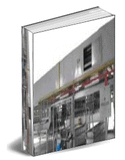Probelms with Latex Dipping of Vascular Catheters
1) At first I thought what you meant by "bulky tips" was the effect of excessive pick up of either the coagulant or the latex at the tip on withdrawal for the formers from the two respective tanks. However, your photos show that it was the narrowing of the areas just below the tips making the tips appearing bulky and thicker.
2) Anyway, let's assume that it was in fact due to excessive pick up of either coagulant or the latex. To overcome this problem, you have to withdraw the former at a lowest possible speed.
3) Formers should be heated to higher temperature to ensure faster drying of the coagulant. You are now using 37C. Please try 45C. Faster drying of the coagulant would help to "set" it before it has a chance to flow back when the formers are inverted after withdrawal. Excessive flow back might result in thinning of the coagulant and hence latex pick-up as seen in the photos.
4) Ensure the formers are well cleaned (with detergent periodically) after each cycle of dipping. This is to ensure even coating of the coagulant.
5) Add about 0.1% of a non-ionic surfactant as a wetting agent in the coagulant. Triton X100 and Teric 320 are possible examples.
6) For health reason, do not use methanol which is highly toxic. It has been reported that workers who are repeatedly exposed to methanol could suffer from eventual blindness. Replace it with ethanol or IPA (Isopropyl alcohol)
7) Poor recovery of the balloons after inflation and deflation could be due to insufficient drying of the balloons and also low modulus of the film. Prevulcanized latex is available commercially in three modulus ranges, namely low, medium and high modulus. I suggest you use either the medium modulus grade or a 50/50 blend of medium modulus and high modulus.


















































.jpg)
.jpg)



.jpg)
.jpg)
.jpg)
.jpg)
.jpg)
.jpg)
.jpg)
.jpg)
.jpg)
.jpg)
.jpg)
.jpg)
.jpg)
.jpg)
.jpg)
.jpg)
.jpg)
.jpg)













































0 Comments:
Post a Comment
<< Home